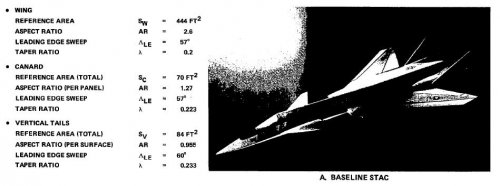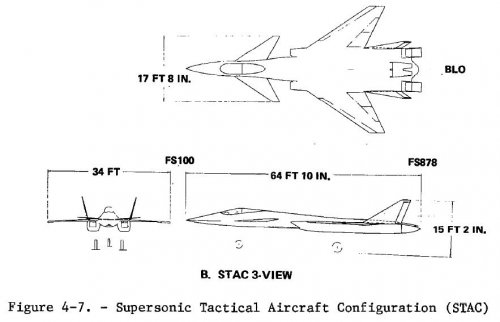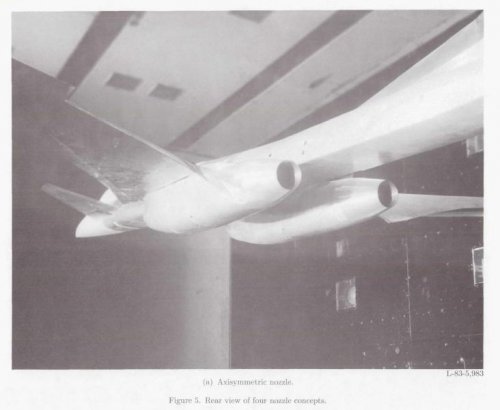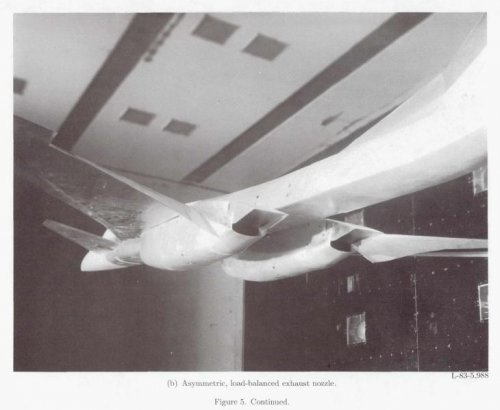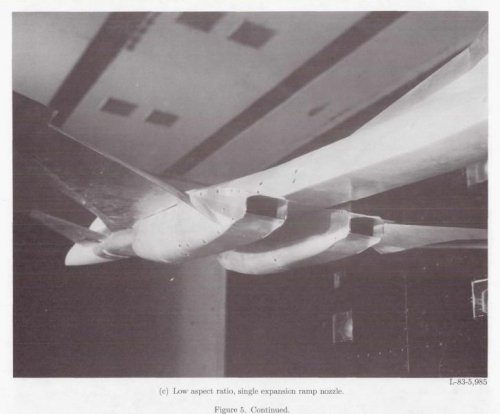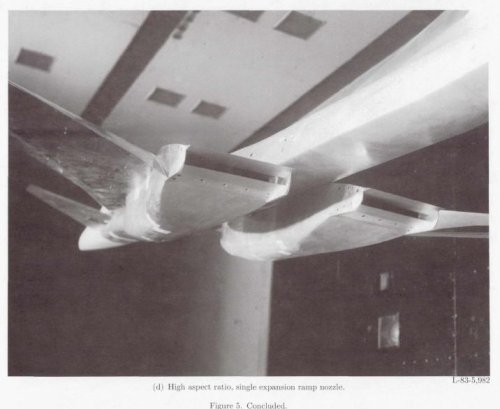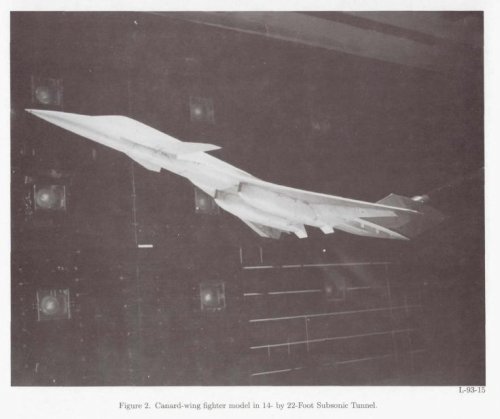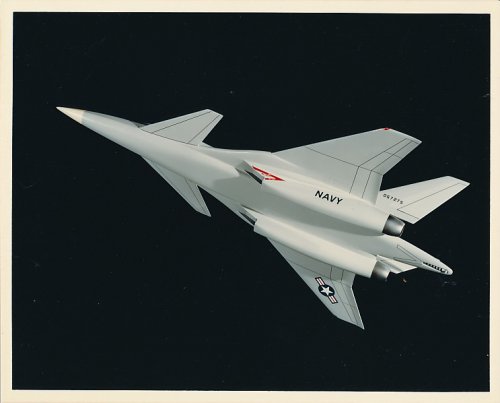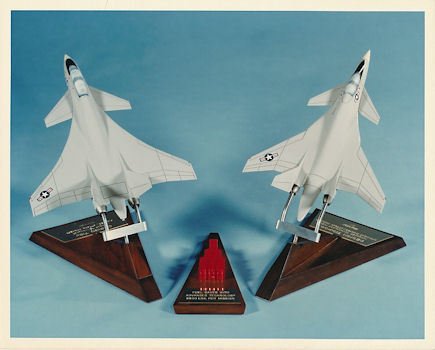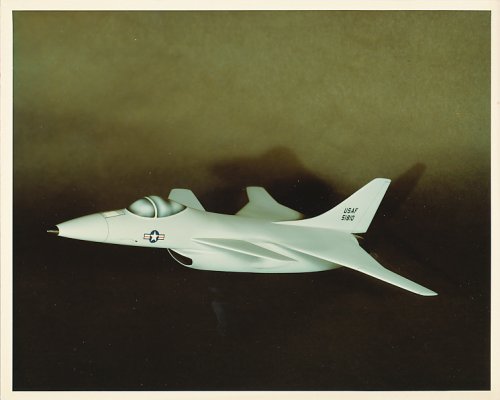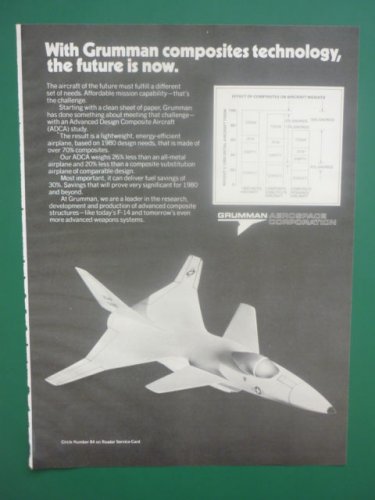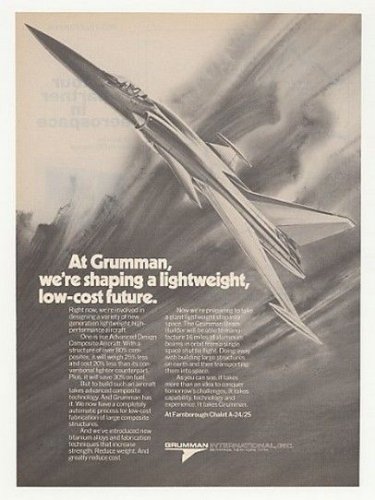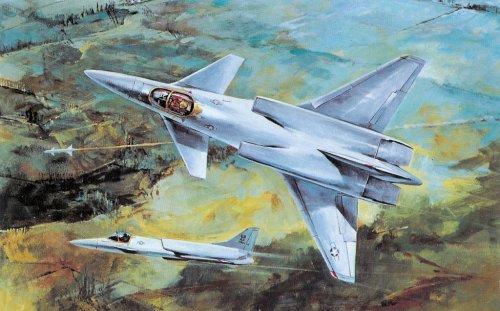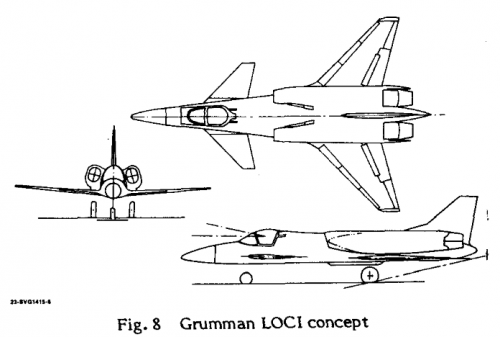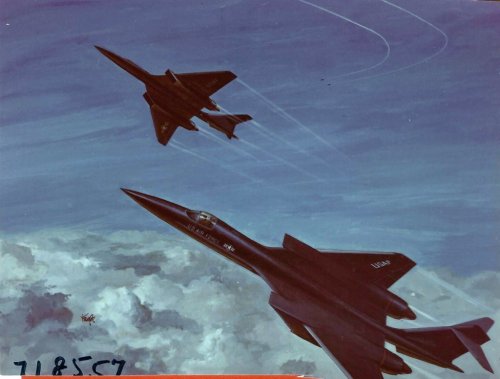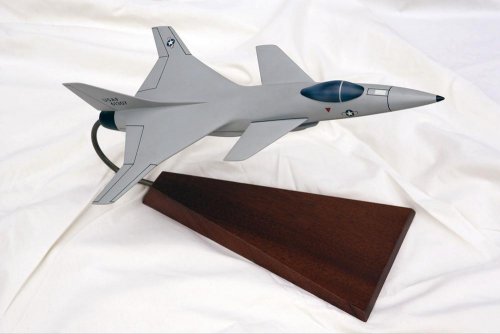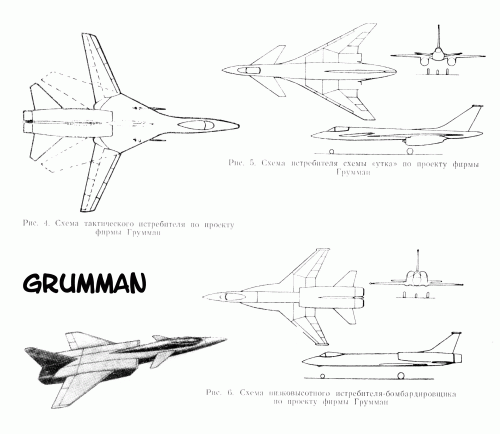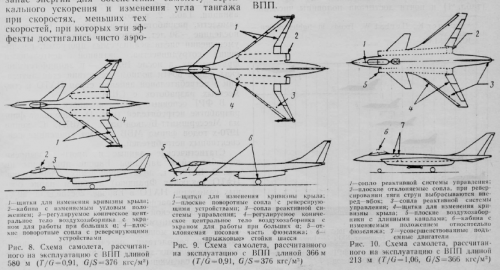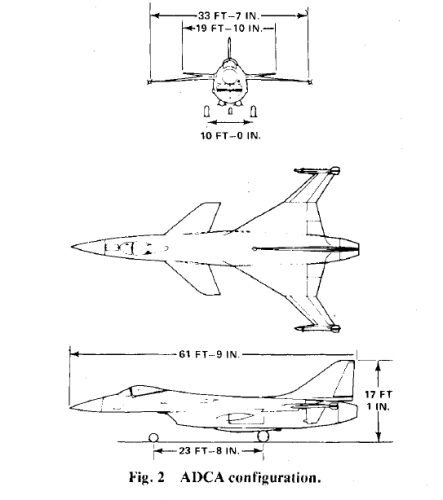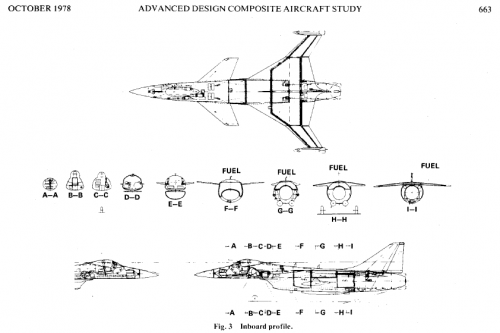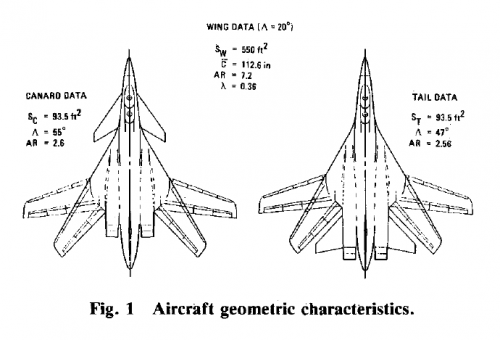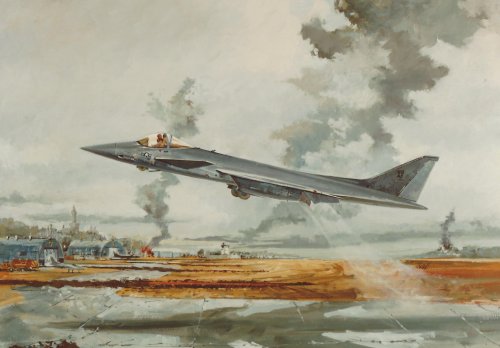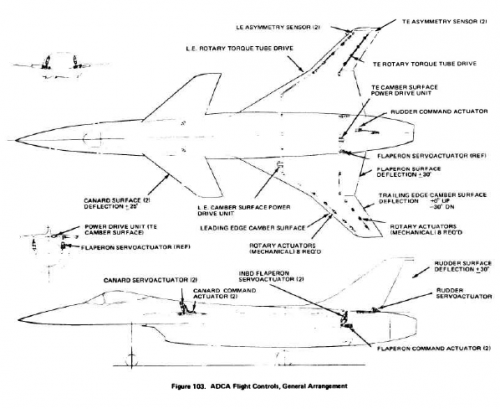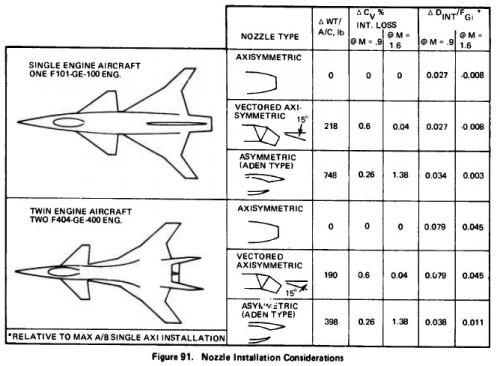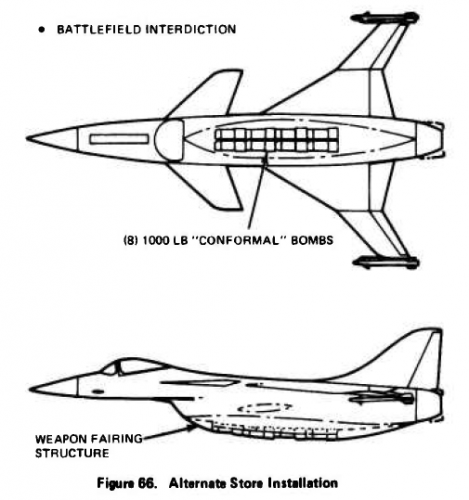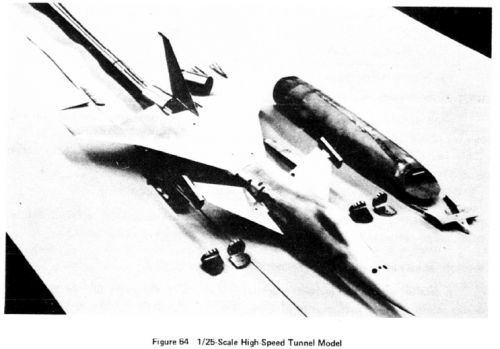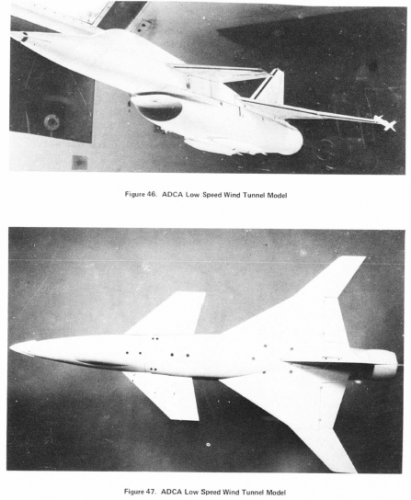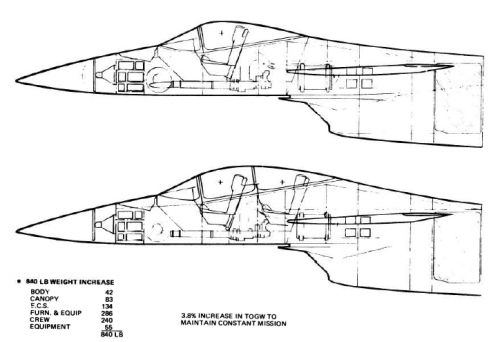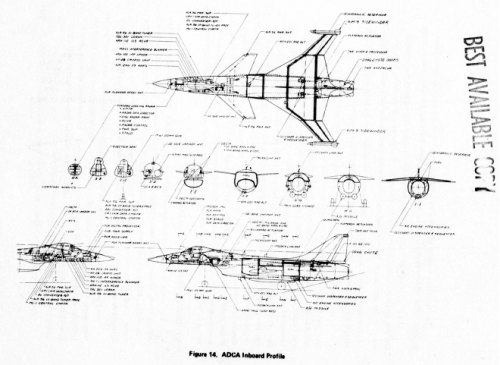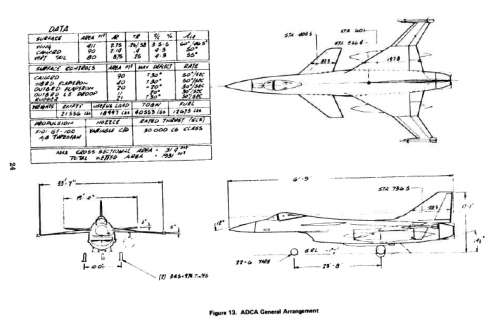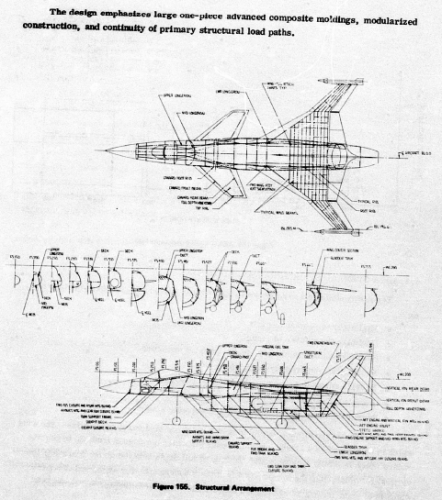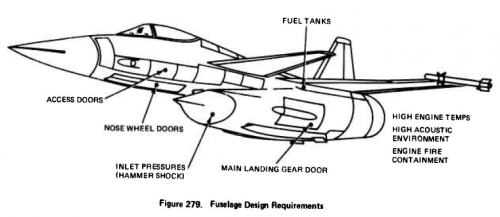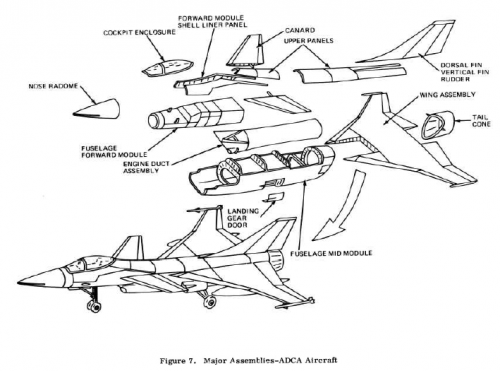A rather complete review of prospects for use of composite materials abroad was published in the pages of our journal in 1984,1 but recently a series of new information has appeared about foreign firms' development American firm of Grumman studied possibilities of creating a future fighter with unlimited use of composite materials under the ADCA (Advanced Design Composite Aircraft) project. The objective of the work was to study the likely cost reduction of a supersonic fighter and concomitant weight reduction with maximum possible use of composite materials in its construction. Requirements placed on the ADCA aircraft were to ensure supersonic cruising speed, high acceleration characteristics and rate of climb, lengthy combat maneuvering at altitude at Mach 0.9, and good airfield performance. Graphite-epoxy, boron-epoxy and graphite-boron-epoxy materials, which were sufficiently worked out and already used previously in individual components of Some aircraft constructions, were considered as possible composite materials for use.
The project of an aircraft with a take-off weight of 17.33 tons was chosen from several versions of a future supersonic fighter satisfying the requirements laid down; it was the cheapest and lightest (Fig. 1). Its acceleration time from Mach 0.8 to Mach 1.6 at an altitude of 10,000 m was 79 seconds. The take-off run with missiles on external mounts with an overall weight of 5.54 tons did not exceed 975 m. The landing run also was the same distance. The most difficult to fulfill was the requirement to ensure lengthy combat maneuvering of the designed fighter with a g-load of 3.8 at an altitude of 9,000 m and a speed corresponding to Mach 0.9. Considering that the design temperature of the aircraft skin in the most important flight regimes did not exceed 127[] Centigrade, the decision was made to use graphite-epoxy as the primary structural material, from which the following basic structural components were designed: multispar continuous wing, foreplane (all moving stabilizer), vertical tailplane (with honeycomb filler), semimonocoque fuselage with wing attachment to it on three load-bearing spars.
The foreign press notes that compared with a fighter of similar purpose and with similar technical flight characteristics but made of traditional metal alloys, wide use of composite materials substantially reduced the weight of basic structural components of the ADCA aircraft, including 28 percent in the wing, 22 percent in the JPRS-UFM-88-008 5 August 1988 32 Fig. 1. Drawings of general views of fighter being created under the ADC A program (dimensions in meters) fuselage, 23 percent in the foreplane and fin, and 20 percent in the power plant air intakes. Studies showed that a certain decrease in weight of the aircraft construction also can be achieved using the latest metal alloys, but in this case the proportion of weight reduction does not exceed 9 percent. In addition, American specialists assert that they managed not only to design a stronger and lighter wing meeting given specifications, but also to give it new aeroelastic properties. In particular, in flight under the effect of aerodynamic forces the wing is capable of acquiring a specific twist at a certain angle close to optimum for the given flight regime without the help of controls. In this way the wing's lift/drag ratio is kept close to optimum in different flight regimes. Wings of metal construction do not have that capability. In wings made of composite materials, however, the effect of programmed aeroelasticity is achieved with consideration of a forecasting of the pairing of "flexural-torsional" strain by appropriately selecting the placement of composite material lamina of varying number and orientation along the wingspan. Foreign specialists point out three possible methods for placing composite material lamina: rotation of longitudinal lamina, unbalance of transverse lamina and rotation of the entire placement scheme. It is believed that all of them provide the requisite nature of change in wing strain in flight, but the last two methods are not recommended for use since they simultaneously lead to a reduction in the wing's torsional rigidity and consequently to a decrease in the speed where flutter appears. Calculations showed that placement of torsion box skin lamina with a 15 degree forward rotation of the lamina in the ADCA aircraft wing provides best values of wing twist and helps the aircraft achieve high maneuver characteristics. This thesis was confirmed by appropriate wind tunnel tests. A similar effect also can be achieved in a nontwisted wing, but with the help of deflection of special control surfaces, which requires an increase in aircraft weight due to the need for installing an additional system and controls. The method of controlling structural rigidity by rotating the longitudinal composite material lamina in the process of placing them in the skin (in this case by 15 degrees backward with respect to the longitudinal axis) was used in creating the fin of the ADCA aircraft. Transverse composite material lamina (90 degrees) and crossed lamina (plus or minus 45 degrees) retained their position. As a result there was a 35 percent increase in the design flutter speed and 23 percent increase in fin strength for the most critical design case. Meanwhile in the process of designing the ADCA aircraft Grumman experts proved that the simple substitution of composite materials for metal alloys in the construction may lead in the final account only to a slight decrease (around 13 percent) in its take-off weight, which is economically unjustified with consideration of the high cost of composite materials. But if the design of such an aircraft is created [sozdavatsya] in advance with consideration of features of composite materials and they are used purposefully, then its cost in the supersonic fighter version drops by 25 percent (in 1980 prices), the cost during its service life drops by 21 percent, and the take-off weight drops by 26 percent compared with a similar aircraft made of metal.


